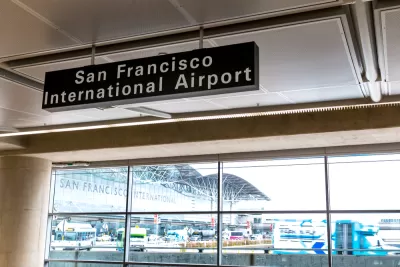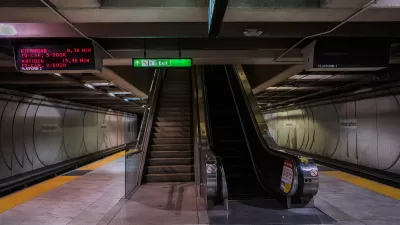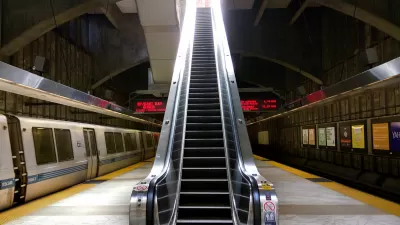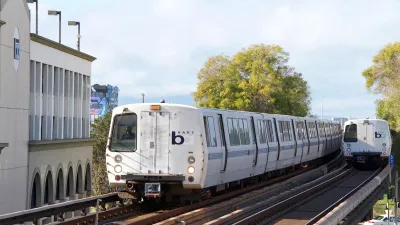With weekday commuter ridership still lagging far below 2019 levels and remote work not going anywhere anytime soon, the agency plans to increase train frequencies on weekends and reduce some weekday service.

The Bay Area Rapid Transit (BART) agency, which serves the San Francisco Bay Area, plans to adjust its service to better serve weekend travelers as weekday ridership remains low, reports Adam Shanks in the San Francisco Examiner. “With office vacancy rates in downtown San Francisco climbing to record highs, BART is planning to direct its finite resources to better serve those who rely on the transit agency during off-peak hours.”
Shanks continues, “Under a proposal introduced this week, BART would reduce most lines from four to three trains per hour during the day, but increase service from two to three trains per hour at night and on the weekends.”
In March of this year, weekday ridership was only at 37 percent of pre-pandemic levels. “The yellow line, which runs between Millbrae and Antioch, would be the only one spared from the weekday daytime cuts. It’s BART’s most popular ride, with the busiest train seeing a passenger load more than three times that of the most-packed Orange line train, for example.” BART also plans to increase frequencies on the yellow line and to the region's airports.
Like many other transit agencies, “BART is facing a budget deficit of about $78 million in 2025, when its tranche of federal COVID-19 aid runs dry.”
FULL STORY: BART Plans to Increase Weekend Service, Decrease Service on Weekdays

Study: Maui’s Plan to Convert Vacation Rentals to Long-Term Housing Could Cause Nearly $1 Billion Economic Loss
The plan would reduce visitor accommodation by 25,% resulting in 1,900 jobs lost.

North Texas Transit Leaders Tout Benefits of TOD for Growing Region
At a summit focused on transit-oriented development, policymakers discussed how North Texas’ expanded light rail system can serve as a tool for economic growth.

Why Should We Subsidize Public Transportation?
Many public transit agencies face financial stress due to rising costs, declining fare revenue, and declining subsidies. Transit advocates must provide a strong business case for increasing public transit funding.

How to Make US Trains Faster
Changes to boarding platforms and a switch to electric trains could improve U.S. passenger rail service without the added cost of high-speed rail.

Columbia’s Revitalized ‘Loop’ Is a Hub for Local Entrepreneurs
A focus on small businesses is helping a commercial corridor in Columbia, Missouri thrive.

Invasive Insect Threatens Minnesota’s Ash Forests
The Emerald Ash Borer is a rapidly spreading invasive pest threatening Minnesota’s ash trees, and homeowners are encouraged to plant diverse replacement species, avoid moving ash firewood, and monitor for signs of infestation.
Urban Design for Planners 1: Software Tools
This six-course series explores essential urban design concepts using open source software and equips planners with the tools they need to participate fully in the urban design process.
Planning for Universal Design
Learn the tools for implementing Universal Design in planning regulations.
Ascent Environmental
Borough of Carlisle
Institute for Housing and Urban Development Studies (IHS)
City of Grandview
Harvard GSD Executive Education
Toledo-Lucas County Plan Commissions
Salt Lake City
NYU Wagner Graduate School of Public Service





























